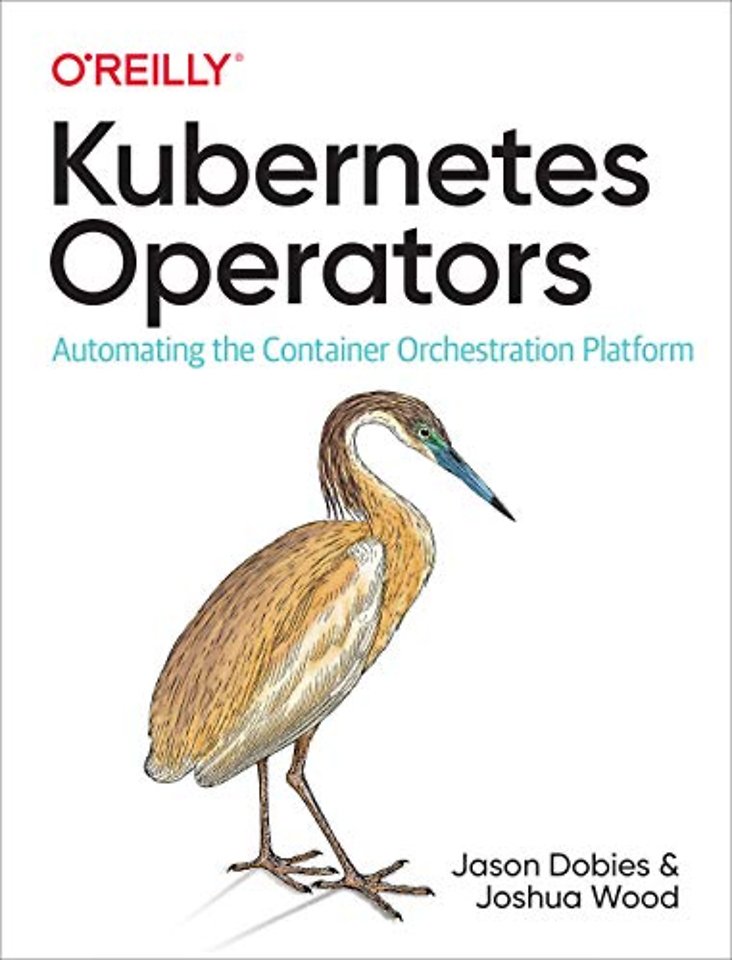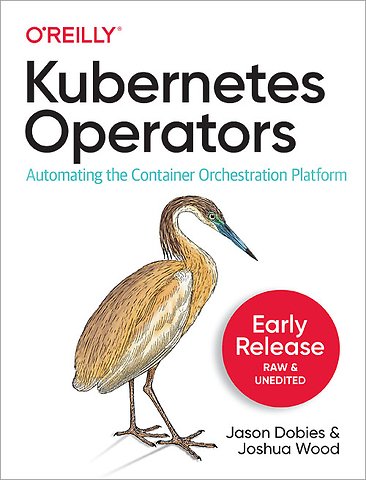


Jason Dobies is a developer advocate at Red Hat. Jason has worked in the software industry for close to 20 years, developing in a variety of languages, including Python, Java, and Go.
Meer over de auteursKubernetes Operators
Automating the Container Orchestration Platform
Paperback Engels 2020 9781492048046Samenvatting
Operators are a way of packaging, deploying, and managing Kubernetes applications. A Kubernetes application doesn’t just run on Kubernetes; it’s composed and managed in Kubernetes terms. Operators add application-specific operational knowledge to a Kubernetes cluster, making it easier to automate complex, stateful applications and to augment the platform. Operators can coordinate application upgrades seamlessly, react to failures automatically, and streamline repetitive maintenance like backups.
Think of Operators as site reliability engineers in software. They work by extending the Kubernetes control plane and API, helping systems integrators, cluster administrators, and application developers reliably deploy and manage key services and components. Using real-world examples, authors Jason Dobies and Joshua Wood demonstrate how to use Operators today and how to create Operators for your applications with the Operator Framework and SDK.
- Learn how to establish a Kubernetes cluster and deploy an Operator
- Examine a range of Operators from usage to implementation
- Explore the three pillars of the Operator Framework: the Operator SDK, the Operator Lifecycle Manager, and Operator Metering
- Build Operators from the ground up using the Operator SDK
- Build, package, and run an Operator in development, testing, and production phases
- Learn how to distribute your Operator for installation on Kubernetes clusters
Specificaties
Lezersrecensies
Over Joshua Wood
Inhoudsopgave
Who This Book Is For
What You Will Learn
Operator Framework and SDK
Other Operator Tools
Conventions Used in This Book
Using Code Examples
O’Reilly Online Learning
How to Contact Us
Acknowledgments
1. Operators Teach Kubernetes New Tricks
How Kubernetes Works
Example: Stateless Web Server
Stateful Is Hard
Operators Are Software SREs
How Operators Work
Kubernetes CRs
How Operators Are Made
Example: The etcd Operator
The Case of the Missing Member
Who Are Operators For?
Operator Adoption
Let’s Get Going!
2. Running Operators
Setting Up an Operator Lab
Cluster Version Requirements
Authorization Requirements
Standard Tools and Techniques
Suggested Cluster Configurations
Checking Your Cluster Version
Running a Simple Operator
A Common Starting Point
Fetching the etcd Operator Manifests
CRs: Custom API Endpoints
Who Am I: Defining an Operator Service Account
Deploying the etcd Operator
Declaring an etcd Cluster
Exercising etcd
Scaling the etcd Cluster
Failure and Automated Recovery
Upgrading etcd Clusters
Cleaning Up
Summary
3. Operators at the Kubernetes Interface
Standard Scaling: The ReplicaSet Resource
Custom Resources
CR or ConfigMap?
Custom Controllers
Operator Scopes
Namespace Scope
Cluster-Scoped Operators
Authorization
Service Accounts
Roles
RoleBindings
ClusterRoles and ClusterRoleBindings
Summary
4. The Operator Framework
Operator Framework Origins
Operator Maturity Model
Operator SDK
Installing the Operator SDK Tool
Operator Lifecycle Manager
Operator Metering
Summary
5. Sample Application: Visitors Site
Application Overview
Installation with Manifests
Deploying MySQL
Backend
Frontend
Deploying the Manifests
Accessing the Visitors Site
Cleaning Up
Summary
6. Adapter Operators
Helm Operator
Building the Operator
Fleshing Out the CRD
Reviewing Operator Permissions
Running the Helm Operator
Ansible Operator
Building the Operator
Fleshing Out the CRD
Reviewing Operator Permissions
Running the Ansible Operator
Testing an Operator
Summary
Resources
7. Operators in Go with the Operator SDK
Initializing the Operator
Operator Scope
Custom Resource Definitions
Defining the Go Types
The CRD Manifest
Operator Permissions
Controller
The Reconcile Function
Operator Writing Tips
Retrieving the Resource
Child Resource Creation
Child Resource Deletion
Child Resource Naming
Idempotency
Operator Impact
Running an Operator Locally
Visitors Site Example
Summary
Resources
8. Operator Lifecycle Manager
OLM Custom Resources
ClusterServiceVersion
CatalogSource
Subscription
InstallPlan
OperatorGroup
Installing OLM
Using OLM
Exploring the Operator
Deleting the Operator
OLM Bundle Metadata Files
Custom Resource Definitions
Cluster Service Version File
Package Manifest File
Writing a Cluster Service Version File
Generating a File Skeleton
Metadata
Owned CRDs
Required CRDs
Install Modes
Versioning and Updating
Writing a Package Manifest File
Running Locally
Prerequisites
Building the OLM Bundle
Installing the Operator Through OLM
Testing the Running Operator
Visitors Site Operator Example
Summary
Resources
9. Operator Philosophy
SRE for Every Application
Toil Not, Neither Spin
Automatable: Work Your Computer Would Like
Running in Place: Work of No Enduring Value
Growing Pains: Work That Expands with the System
Operators: Kubernetes Application Reliability Engineering
Managing Application State
Golden Signals Sent to Software
Seven Habits of Highly Successful Operators
Summary
10. Getting Involved
Feature Requests and Reporting Bugs
Contributing
Sharing Operators
Summary
A. Running an Operator as a Deployment Inside a Cluster
B. Custom Resource Validation
C. Role-Based Access Control (RBAC)
Fine-Tuning the Role
Index
Anderen die dit boek kochten, kochten ook
Rubrieken
- advisering
- algemeen management
- coaching en trainen
- communicatie en media
- economie
- financieel management
- inkoop en logistiek
- internet en social media
- it-management / ict
- juridisch
- leiderschap
- marketing
- mens en maatschappij
- non-profit
- ondernemen
- organisatiekunde
- personal finance
- personeelsmanagement
- persoonlijke effectiviteit
- projectmanagement
- psychologie
- reclame en verkoop
- strategisch management
- verandermanagement
- werk en loopbaan





